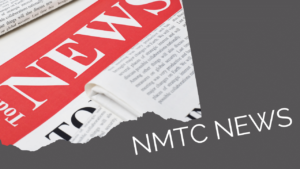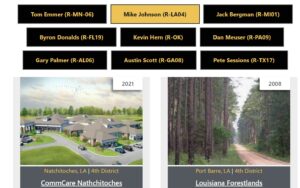Today the CDFI Fund released the 2015 NMTC Application. Below are a few of the changes we’d like to highlight:
Restrictions on the Use of QLICI Proceeds:
The NOAA includes new restrictions on the use of QLICI proceeds:
As a condition of eligibility for this Allocation Round, the Applicant will not be permitted the use of the proceeds of Qualified Equity Investments (QEIs) to make Qualified Low-Income Community Investments (QLICIs) in Qualified Active Low Income Community Businesses (QALICBs) where QLICI proceeds are used to repay or refinance any debt or equity provider or a party related to any debt or equity provider whose capital was used to fund the QEI except if: (i) the QLICI proceeds are used to repay documented reasonable expenditures that are directly attributable to the qualified business of the QALICB, and such past expenditures were incurred no more than 24 months prior to the QLICI closing date; or (ii) no more than five percent of the QLICI proceeds are used to repay or refinance prior investment in the QALICB. Refinance includes transferring cash or property directly to any debt or equity provider or indirectly to a party related to any debt or equity provider.
Question 13a on the application asks CDE applicants to answer “yes” or “no” whether they will comply with the above rules. If an applicant answers “no” then their application will be denied.
The Compliance and Monitoring FAQ provides more details and two examples:
42. What are the restrictions on the use of QLICI proceeds to directly or indirectly reimburse expenditures incurred by a QALICB or Project Sponsor (an entity that owns or Controls the QALICB) and to directly or indirectly fund a QEI?
Beginning with the CY 2015 round, only documented reasonable expenditures that are directly attributable to the qualified business of the QALICB can be paid or reimbursed from QLICI proceeds to directly or indirectly fund a QEI, provided that these expenditures have either been (i) incurred no more than 24 months prior to the date on which the QLICI transaction closes, or (ii) represent no more than 5 percent of the total QLICIs made by the CDE into the QALICB.
Reasonable expenditures are expenditures for a legitimate business purpose that occur during the normal course of operation, and must be similar in amount and scope when compared to expenditures by a similar entity for a similar project under similar circumstances. Such expenditures may be made directly by the Project Sponsor on behalf of the QALICB or be funded through a loan or equity investment made by the Project Sponsor to the QALICB.
Of note, the IRS has not issued guidance on what costs are reimbursable under §45D. Until such guidance is made public, the CDFI Fund supports the use of the above parameters for transactions involving the reimbursement of incurred cost. The following examples are offered for additional clarity.
Example 1: Project Expenditures within 24 Months
Within 24 months prior to the closing of the QLICI transaction, a Project Sponsor uses funds it has raised from various sources to obtain development permits, begin construction, acquire or install equipment, or acquire other property related to the project; all of which represent reasonable expenditures and for which the Project Sponsor has retained documentation (i.e. invoices, receipts, proof of payment, etc.) totaling $1,000,000 and are directly attributable to the qualified business of the QALICB.
Out of $10,000,000 in total QLICIs, up to $1,000,000 of the QLICI proceeds can be used to reimburse the Project Sponsor for these documented expenditures and to directly or indirectly fund a leverage loan. The remaining QLICI proceeds ($9,000,000) could be used for operating needs, working capital needs, equipment, additional construction expenditures, or other needs related to the project or business of the QALICB.
Example 2: Project Expenditures up to 5% of QLICI Proceeds
Same facts as Example 1, except an additional $700,000 of documented, reasonable expenditures incurred by the Project Sponsor were incurred greater than 24 months prior to the closing of the QLICI transaction.
The QALICB may use no more than 5% of QLICI proceeds to reimburse documented, reasonable expenditures that are directly attributable to the qualified business of the QALICB regardless of when those expenditures were incurred. In this scenario, if the total QLICIs to the QALICB was $10 million, the QALICB could use up to $500,000 to reimburse expenditures that were incurred prior to the QLICI closing.
In summary, the QALICB may elect to either reimburse reasonable expenditures incurred within 24 months of the QLICI closing date as in the first example ($1,000,000) or reimburse reasonable expenditures that represent up to 5% of the QLICI proceeds incurred prior to the QLICI closing date ($500,000). It may not do both. If the QALICB is using QLICI proceeds to reimburse or repay the Project Sponsor for documented, reasonable expenditures directly attributable to the qualified business of the QALICB that were incurred within the previous 24 months ($1,000,000), it may not use QLICI proceeds to repay or reimburse the Project Sponsor for any expenditures that occurred outside of 24 months.
43. How will the CDFI Fund monitor the restriction on the use of QLICI proceeds to directly or indirectly reimburse expenditures incurred by a QALICB or Project Sponsor required under the CY 2015 NMTC Application?
CDEs must include such covenants in financing agreements with QALICBs as may be necessary to reflect this restriction. The agreements containing such covenants must be available for inspection by the CDFI Fund. Second, the CDE should collect information as may be necessary and maintain documentation to trace the use of QLICI proceeds to use by the QALICB at the time of the initial QLICI is made and at least annually thereafter. Where the QALICB will repay or refinance a debt or equity provider or a party related to a debt or equity provider under the 24-month or five percent exception rules, the CDE should maintain documentation supporting that the reimbursements can be directly traced to actual expenditures. This documentation must be available for inspection by the CDFI Fund. Documentation to support compliance with this restriction must be retained for the period of the QLICI in the QALICB plus three years or the seven-year compliance period plus three years, whichever is shorter.
44. Can a QALICB use QLICI proceeds to pay a debt or equity provider to monetize an asset owned or controlled by the QALICB or an Affiliate of a QALICB, including but not limited to the accreted value of an asset?
No. The purpose of the NMTC Program is to attract additional investment into eligible communities. The use of QLICI proceeds to monetize existing assets does not represent new investment. Rather, transactions of this type represent a change in the form of the existing asset of the QALICB.
New Underserved States
Each year, the CDFI Fund names ten “underserved” states that have received the least NMTC allocation in proportion to their statewide population residing in low income communities. This year, Arkansas and Wyoming are new to the list, replacing Alabama and Nebraska on the 2014 list. From the Application Q&A:
Since the inception of the NMTC Program, QLICIs have been made in all 50 states, the District of Columbia, and Puerto Rico. However, the CDFI Fund has identified Puerto Rico along with the following 10 states as areas that have received fewer dollars of QLICIs in proportion to their statewide population residing in Low-Income Communities: Arkansas, Florida, Georgia, Idaho, Kansas, Nevada, Tennessee, Texas, West Virginia, and Wyoming. The above states are identified by obtaining the total dollars of QLICIs invested (2003-2013) in each state and dividing the total dollars of QLICIs by the population residing in LICs in that state.
Targeting of Native Areas:
Investing in Federal Indian Reservations, Off-Reservation Trust Lands, Hawaiian Home Lands, and Alaska Native Village Statistical Areas is now included in the list of “innovative uses” of a NMTC allocation in Question 18 in the Application. The Application Q&A explains how to determine whether a project is in any of these areas:
If the Applicant commits to investing in Federal Indian Reservations, Off-Reservation Trust Lands, Hawaiian Home Lands, and Alaska Native Village Statistical Areas, how can the Applicant identify whether potential NMTC investments are located in these areas?
Applicants should use the CIMS3 to geocode addresses and determine whether potential QALICBs are located in Federal Indian Reservations, Off-Reservation Trust Lands, Hawaiian Home Lands, and Alaska Native Village Statistical Areas. Please visit https://www.cims.cdfifund.gov/preparation/?config=config_nmtc.xml
Describing Structures with Multiple Financial Notes
The application includes new instructions for describing a financial product structured with multiple financial notes. From the application:
Question 14a/b: TIP: For each product, the Applicant should clearly discuss how the product is structured as well as benefits this structure provides to borrowers/investees. A financial product structured with multiple financial notes (e.g., an A and B note, or an A, B, and C note, etc.) must be described as one financial product. In this case, the rates and terms of the financial notes should be discussed on a blended basis. For additional guidance on calculating blended interest rates, see the Application Q&A. The individual financial notes should not be listed as separate products unless they will also be offered on a stand-alone basis. Applicants will not be scored as favorably if they do not follow these instructions.
From the Application Q&A:
How should an Applicant respond to Question 14 if it will offer multiple financial notes to a single QALICB?
Question 14 of the NMTC Allocation Application asks Applicants to describe up to three financial products that will be offered with capital raised from its NMTC Allocation. Each financial product described by the Applicant must be a stand-alone financial product. For each product, the Applicant should clearly discuss how the product is structured, as well as the benefits this structure provides to borrowers/investees. A single financial product may contain multiple financial notes offered together. For example, the Applicant will offer a financing package that includes a senior loan (A note) and a subordinate loan (B note) to QALICBs. This financing package should be described as a single financial product to the extent that the individual loans will not be offered individually.
Applicants that will offer multiple financial notes in a single financial product should describe the rates and terms of the financial notes on a blended basis where possible. To determine the blended interest rate for two or more financial notes, the Applicant should calculate the weighted interest rate for each financial note. See Question 37 below. To the extent different financial notes have different flexible features (e.g., the A-note has a 30-year term and the B-note has a seven year term), Applicants should clearly describe the flexible features of each financial note.
In Question 14(b), what does subordination mean as a flexible feature?
Subordinated debt is NOT a specific type of debt product for the purposes of this question. Per the TIP to Question 14(b) and Question 35 above, a financial product with multiple financial notes (e.g., an A and B note, or an A, B, and C note) must be described as one product. The Applicant may describe subordination as a flexible feature for the product(s) described in Question 14(b). For example, the Applicant is offering a product with an A and B note where the B note is subordinate to the A note. The Applicant may also discuss CDFI FUND | NMTC Program Allocation Application Questions and Answers 26 subordination in relation to the financing provided to the QALICB by other CDEs in multiCDE transactions or in relation to non-NMTC financing provided to the QALICB.





